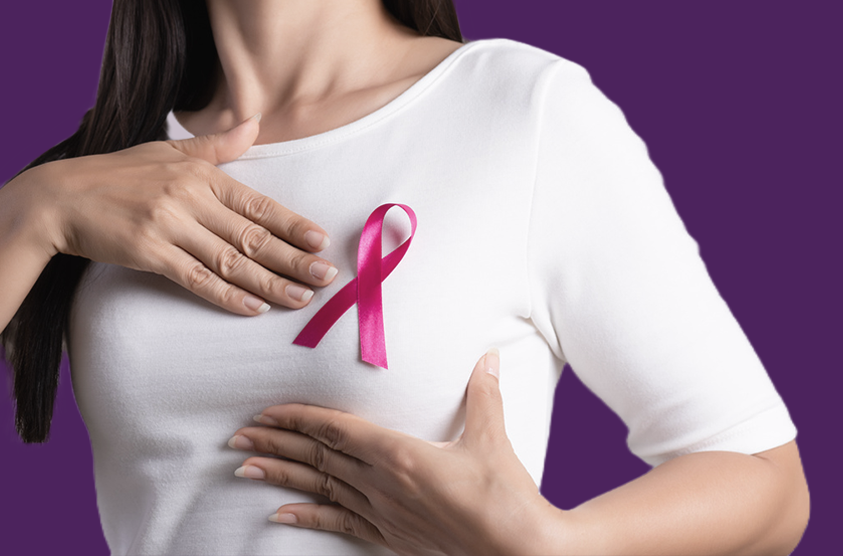- Fikriye Gedikoglu
- 0 Comments
Breast cancer is one of the most common cancers among women. Early diagnosis greatly improves the chances of successful treatment. Therefore, regular check-ups and screenings are essential for lowering the risk and detecting the cancer early. Breast self-examination is also an important step for early awareness. So, how are breast cancer screenings conducted, and who should get them? Also, how do you perform a breast self-examination? Here are all the details…
Who is at High Risk of Breast Cancer?
The risk of breast cancer varies depending on many factors such as genetic factors, lifestyle and environmental factors. Here are some groups at risk of breast cancer:
Family History of Breast Cancer: If you have a family history of breast cancer, especially close relatives such as a mother, sister or grandmother, this can increase your risk. Genetic predisposition is an important factor that increases the likelihood of developing breast cancer.
Women with BRCA Gene Mutations: Women who carry mutations in the BRCA1 and BRCA2 genes significantly increase their risk of breast cancer. These gene mutations can increase the risk of breast cancer and ovarian cancer. These women should have more frequent check-ups.
Age: The risk of breast cancer increases with age. Women aged 50 and over are particularly at increased risk. However, young women can also develop breast cancer, so care should be taken at an early age.
Hormonal Factors: Starting menstruation at an early age (before the age of 12) and having menopause at a late age (55 years and later) can increase the risk of breast cancer. The use of birth control pills and hormone replacement therapy are also risk factors.
Excessive Alcohol Consumption and Smoking: Alcohol and smoking are important environmental factors that play a role in the development of breast cancer. Excessive alcohol consumption and smoking can increase the risk of cancer.
Overweight and Obesity: Overweight and obesity, especially after menopause, are among the factors that increase the risk of breast cancer. Fat tissue increases estrogen production in the body, which can increase the risk of breast cancer.
Lack of Physical Activity: Lack of regular physical activity can also increase the risk of breast cancer. Physical activity regulates hormone balance and has positive effects on overall health.
Which Check-ups Should I Do for Breast Cancer?
Breast Self-Examination: Every woman needs to perform regular breast self-examinations. This simple self-examination can help detect early signs of breast cancer. Women should check their breasts once a month, after the end of their menstrual period, using their hands.
Breast Cancer Screening Tests:
Mammography: Mammography is a very important screening method to detect breast cancer at an early stage. For women aged 40 and over, mammography is recommended once every 5-10 years. However, women at risk may request more frequent mammograms.
Ultrasonography: It is recommended in combination with mammography. It is also recommended for young women, for women who do not want to have a mammogram and for women with dense breast tissue. Ultrasound can provide more information about cysts or tumors in the breast tissue. Ultrasound can be performed as often as needed and is absolutely harmless, as it does not contain radiation.
Breast Biopsy: When mammography and ultrasound results are suspicious, a biopsy may be necessary. In this procedure, a tissue sample is taken from suspicious areas and examined under a microscope.
Breast Cancer Family Screening Programs: If you have a family history of breast cancer, genetic testing and advanced screening methods can detect it early. BRCA gene testing can be done to detect early stages of cancer in individuals at risk.
How to Perform Breast Self-Examination?
Breast self-examination is a simple but important step to recognize early signs of cancer. Here are the steps on how to do it:
Stand Up: Take a good look at your body before the mirror. Check for any changes in the shape, size or symmetry of your breasts. Also, observe your breasts for redness, swelling or skin changes.
Raise the Arms: Review the breast tissue again by raising your arms up. This position can be particularly helpful in spotting tumors.
Examine Lying Down: While lying down, place your right hand on your right breast and your left hand on your left breast and carefully check every part of your breast with your fingertips. Feel the entire breast tissue in a circular motion. Check for lumps, hardness or discrepancies.
Educational Videos for Greater Awareness: Watching videos is very useful to learn more about breast self-examination and correct methods. Video tutorials published by health organizations and experts can help you learn the correct examination techniques.
When Should I Have a Checkup?
- Breast self-examination should be done once every month. The best time is after the end of the menstrual cycle.
- Mammography: Mammography is recommended once every 5-10 years for women aged 40 years and older.
- Ultrasonography: A safe option, especially for younger women or women who do not want to have a mammogram.
Breast cancer is a treatable disease with early detection. Regular check-ups and breast self-examination provide an important opportunity to detect this cancer in its early stages and start treatment.

